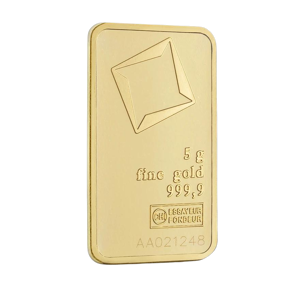Tavex uses cookies to ensure website functionality and improve your user experience. Collecting data from cookies helps us provide the best experience for you, keeps your account secure and allows us to personalise advert content. You can find out more in our cookie policy.
Please select what cookies you allow us to use
Cookies are small files of letters and digits downloaded and saved on your computer or another device (for instance, a mobile phone, a tablet) and saved in your browser while you visit a website. They can be used to track the pages you visit on the website, save the information you enter or remember your preferences such as language settings as long as you’re browsing the website.
| Cookie name | Cookie description | Cookie duration |
|---|---|---|
| tavex_cookie_consent | Stores cookie consent options selected | 60 weeks |
| tavex_customer | Tavex customer ID | 30 days |
| wp-wpml_current_language | Stores selected language | 1 day |
| AWSALB | AWS ALB sticky session cookie | 6 days |
| AWSALBCORS | AWS ALB sticky session cookie | 6 days |
| NO_CACHE | Used to disable page caching | 1 day |
| PHPSESSID | Identifier for PHP session | Session |
| latest_news | Helps to keep notifications relevant by storing the latest news shown | 29 days |
| latest_news_flash | Helps to keep notifications relevant by storing the latest news shown | 29 days |
| tavex_recently_viewed_products | List of recently viewed products | 1 day |
| tavex_compare_amount | Number of items in product comparison view | 1 day |
| Cookie name | Cookie description | Cookie duration |
|---|---|---|
| chart-widget-tab-*-*-* | Remembers last chart options (i.e currency, time period, etc) | 29 days |
| archive_layout | Stores selected product layout on category pages | 1 day |
| Cookie name | Cookie description | Cookie duration |
|---|---|---|
| cartstack.com-* | Used for tracking abandoned shopping carts | 1 year |
| _omappvp | Used by OptinMonster for determining new vs. returning visitors. Expires in 11 years | 11 years |
| _omappvs | Used by OptinMonster for determining when a new visitor becomes a returning visitor | Session |
| om* | Used by OptinMonster to track interactions with campaigns | Persistent |
| Cookie name | Cookie description | Cookie duration |
|---|---|---|
| _ga | Used to distinguish users | 2 years |
| _gid | Used to distinguish users | 24 hours |
| _ga_* | Used to persist session state | 2 years |
| _gac_* | Contains campaign related information | 90 days |
| _gat_gtag_* | Used to throttle request rate | 1 minute |
| _fbc | Facebook advertisement cookie | 2 years |
| _fbp | Facebook cookie for distinguishing unique users | 2 years |
Do Central Banks Buy Gold Bullion?

The Bank of England gold vault holds around 400,000 bars of gold. Central banks, pivotal institutions within the financial landscape, wield significant influence over monetary policies and economic stability.
This article will look at why central banks buy gold, factors that influence banks decisions to hold gold, which central banks hold the most gold, where do central banks hold gold, and the role central banks have in buying gold.
Why Do Central Banks Buy Gold

Global central banks purchased almost 800 tonnes of this precious metal by Q3 2023, and as a result, they currently possess about a firth of all gold that has ever been mined.
As per the World Gold Council, approximately 25% of central banks plan to persist in augmenting their reserves in the upcoming year
Central banks, such as The Bank of England, play a pivotal role in the global economy, and their decision to buy gold is driven by several strategic considerations. Gold serves as a reserve asset that enhances financial stability and diversifies central banks’ portfolios. Unlike fiat currencies, which can be subject to inflationary pressures or geopolitical uncertainties, gold retains its intrinsic value over time, making it a reliable store of wealth.
Additionally, gold acts as a hedge against currency depreciation and serves as a safeguard during periods of economic turmoil. By financial institutions increasing their gold reserves, central banks bolster confidence in their currency and strengthen their ability to mitigate risks associated with market fluctuations. Furthermore, gold reserves provide central banks with greater autonomy and flexibility in monetary policy implementation, contributing to overall economic resilience and stability.
5 Major Factors at Influence Banks Decisions to Hold Gold:
As part of The World Gold Council Central Bank Research Survey in 2023, the top 5 factors that influence their decision to buy gold are:
- Historical position
- Performance during times of crisis
- Long-term store of value/inflation hedge
- Portfolio diversifier
- No default risk
Read more on the topic: Central Bank Persisted in Record-Breaking Gold Purchases Last Year. But Why?
Which Central Banks Hold the Most Gold

The United States, Germany, Italy, France, and the Russian Federation are the top five nations in terms of central bank purchases of gold in the financial market as of 2024.
- United States 🇺🇸: With more than 8,100 metric tonnes of gold, the US Federal Reserve has the largest holding of any central bank. This represents almost 68% of their whole foreign reserve holdings.
- Germany 🇩🇪: The country owns about 3,352 MT of gold, which is managed by the Deutsche Bundesbank. This amounts to roughly 67% of the United States’ overall reserves, which is less than half of its assets.
- Italy 🇮🇹: The Banca d’Italia has reserves of gold spread across many locations, amounting to approximately 2,451 metric tonnes, or 64 percent of their total reserves.
- France 🇫🇷: The Banque de France, which holds over 2,436 tonnes of gold reserves, or roughly 66% of its entire foreign reserves, comes in right after Italy.
- Russian Federation 🇷🇺: With 2,332 tonnes of gold reserves, Russia’s central bank is currently behind France in terms of holding the yellow metal, having only recently started purchasing gold. This represents a mere 24.67% of their whole reserve.
Where Do Central Banks Store Gold?

Central banks keep their gold holdings in a variety of places both overseas and locally. A nation’s decision about the physical storage of its gold will be influenced by a number of variables, such as historical customs, geopolitical concerns, and security concerns.
Some places central banks store their gold include:
- Internal storage: Most nations keep a sizeable amount of their gold reserves inside their own boundaries. These include safe havens run by central banks or those held by the government, such as vaults. For instance, the Fort Knox Bullion Depository is where the United States keeps a sizable portion of its gold.
- International storage: A few central banks keep gold in safes kept abroad. The term “holding gold reserves in foreign exchange reserves” describes this. Central banks can increase the security and diversification of their reserves by holding gold abroad. Certain European nations, for instance, keep their gold in the safes of other European central banks.
- Global financial hubs: Some central banks opt to keep their gold in safe deposit boxes situated in global financial hubs such as New York, London, or Zurich. These cities are renowned for having safe facilities that can safeguard gold stockpiles in addition to a well-established financial infrastructure.
- International organisations: The International Monetary Fund (IMF), which stores gold in designated depositories on behalf of its member nations, is one example of an international organisation with which central banks occasionally decide to store their gold.
The Role of Banks in Buying Gold Bullion

Central banks play a crucial role in maintaining economic stability and promoting growth in their respective country. Through monetary policy tools such as interest rate adjustments and open market operations, they aim to control inflation, manage currency stability, and support sustainable economic expansion with these financial assets, enhancing their purchasing power.
Throughout history, gold has played a crucial role in the international monetary system and in economic growth. The gold standard, where currencies were pegged to a specific quantity of gold, was prevalent until the mid-20th century. Even after the collapse of the gold standard, gold reserves remained an essential asset for central banks.
Conclusion
Central banks unequivocally buy gold bullion as part of their strategic reserve management. This article has explored the reasons behind this practice, including historical significance, hedging against uncertainties, and diversification of portfolios. Ensuring price stability in economies is important for
The holdings of major central banks and nationalized banks confirm the prevalence of gold in reserves, emphasising its importance for financial stability in the short term and long term. Amidst evolving financial landscapes, gold remains a timeless asset of enduring value for central banks, reinforcing its indispensable role in modern economies and banking systems.

















